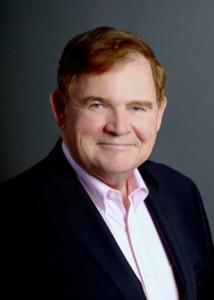Many congregational boards and other leadership teams go on a retreat to launch the new church year. It’s great tool for team building and focusing.
What makes for a terrific retreat?
Few activities can do more to get a team off to a good start and bonded than a well-planned and skillfully executed team retreat. Many boards use retreats; far too few other teams and committees do so, and that is a loss. Hopefully, this article will inspire you and your teams to carry out a retreat sooner rather than later.
But all retreats are not created equal. ANY effort to get the team together and do some planning and getting to know each other better is welcome and leaders who make time and effort for such events, of whatever scope, are to be thanked.
As welcome as even this is, a half day meeting in a church classroom does not a retreat make. To do this right, and to get the full, powerful benefit of a retreat, a few essential elements are required. Consider the following in your planning:
Location: It DOES involve planning, travel, perhaps cost as well, but to have the kind of clearing the head, refocusing, and bonding experience that a really good retreat demands, it needs to be off site, somewhere pleasant and somewhere out of the ordinary. Trust me on this one – a change of pace venue makes all the difference in the world.
Duration: A retreat should involve staying overnight and at least a couple of shared meals together. There is something kind of magic in sorting out shared tasks and sleeping arrangements that infuses the work that will be done. Some of the best conversations I have ever had were standing on the porch of a cabin somewhere with a cup of coffee or a glass of wine, watching the sun rise or set and sharing thoughts and feelings with a fellow team member. For most groups, a gathering late Friday afternoon through late Saturday afternoon will do just fine.
Purpose: A retreat can have many purposes (but not too many!); primary on the list should be: getting to know each other on a deeper level, team building, setting team priorities, some basic protocols for your work in the coming year, and a few – very few but important – goals for the team. One of the best such retreats I ever attended generated only 3 goals for the year. At the start of every meeting thereafter, we read our mission statement and those three goals. Those benchmarks kept us on course and pleasantly productive all year.
Atmosphere and Process: The atmosphere and how things go on the retreat can set the tone for the team for the rest of the year. Ideally, the atmosphere should be one of camaraderie, of exploration, and of inquiry. Processes should encourage participation in a safe environment, that balances an open spirit and getting things done.
Activities: The nature of your group and the facilitator (see below) will determine how best to invest the time, but I would recommend the following be included at some point in the retreat: introductions and hopes for the coming year, perhaps a team building exercise, shared meals and preparation, work and discussion sessions, and plenty of scattered opportunities for people to have private or small group discussions.
Facilitation: The team leader needs to be free to participate fully, and to have opportunities to step back and observe. That is hard to do if that same leader is running everything at the retreat, being consumed by operations and logistics. I would recommend three designations:
— Have a facilitator(s) for the retreat. Even if this incurs a cost, it is well worth it. The facilitator might be another member of your congregation, if someone is available who has that skill set. The Stewardship for Us team provides this type of support, as do most Regional staffs. In any case, the facilitator should know enough about your team before the retreat to tailor activities to meet your needs and group personality. A good facilitator can make a world of difference for a retreat.
— Team Captains can be designated among the retreat participants to share the work load (and build yet more teamwork). Someone could be responsible, for example, for meal planning or preparation, travel coordination, site selection, sleeping arrangements, supplies and materials, etc. Those so designated need not perform their duties alone; its preferable that they recruit others on the team to help with subtasks.
— Designate a note taker and observer, or a couple of them. They should record what was accomplished and agreed upon, as well as how the retreat went for the team. These reports should be informed by the group leader and the facilitator and should be shared with the group for comment and review soon after the retreat. These individuals may also be asked to take some photos during the retreat, as part of the history being retained.
—-Important to include in the record are the “parking lot” items; subjects raised that were not addressed in the retreat but deserve later attention. And very importantly, ensure you have a clean and clear list of any agreements on future tasks; who is to do what, toward what end, by what date or benchmark.
Follow Through and Revisiting: Take a little time post retreat to review what was accomplished, what was incomplete or lacking, and what needs to be retained or done differently in the future. The next Board or team should have the advantage of seeing this review and the aforementioned notes.
And let your congregation know you took the time and trouble to stage a first rate retreat, in service to the congregation and to build a team. Share some results and photos. And don’t be shy about saying what a great time everyone had AND how much you accomplished.
Outcomes: As you can see, this is no small commitment of time and effort. It’s a great investment. Done well, your team comes back closer than ever, with an appreciation for each other as individuals and as a team. They will have clear priorities, some goals, and at least the start of a plan for the coming year. Not a bad way to start your church year. I have known some teams that find this process so productive that they schedule a mid-course retreat as well, to validate where they are and to make course corrections as needed.
I hope your retreat is equally as enjoyable and productive.
 Bill Clontz is a stewardship consultant with the Stewardship for Us Team, supporting the UUA. Bill can be reached at bill@stewardshipforus.com, via UUA Congregational Life,(http://www.uua.org/finance/fundraising), or via regional staff.
Bill Clontz is a stewardship consultant with the Stewardship for Us Team, supporting the UUA. Bill can be reached at bill@stewardshipforus.com, via UUA Congregational Life,(http://www.uua.org/finance/fundraising), or via regional staff.
This blog has a new posting no less than once a month. You may find it and more at www.stewardshipforus.com. You are welcome to sign up for stewardship updates at the blog. Comments and discussion are always welcome; share your experiences and ideas with us.

Stewardship Consultant Barry Finkelstein has been a Unitarian Universalist congregational stewardship consultant since the Fall of 2007 and has worked with over 100 congregations on annual budget drives, capital campaigns, and strategic planning. This is Barry’s last post as he is retiring effective January 1, 2025.
